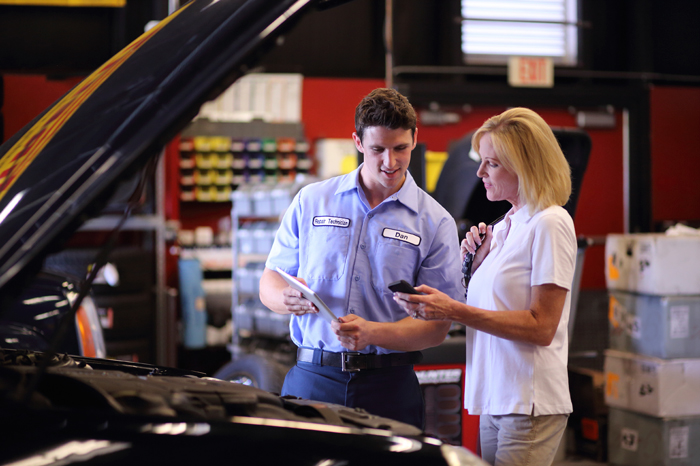
Today, we are looking a little deeper at the mind and process of a diagnostic technician. As technicians, we all develop our own diagnostic processes. Mine may be very different from yours, which may be very different from the tech that works next to you. But, the end goal is always the same. Fix the car right the first time, and do it as fast as possible.
In my opinion, diagnostic processes should all start pretty much the same way: duplicate the concern and evaluate the entire situation of the car.
Throughout this article, I’m going to be using the example of a lighting circuit because it’s easy to understand, and while it used to be a simple circuit, it’s become a lot more complex.
You’ve probably heard the acronym K.I.S.S., but with vehicle systems so complex, how do we keep it simple? You have modules controlling everything in the entire vehicle – which is a good thing because they give us a lot more information than we would have had 15 or 20 years ago. But with that extra information, it’s actually easier now to get twisted up into weird problems than it ever was before.
So we really need to have a good diagnostic process. And, like I said, they’re going to vary from tech to tech. You may start by grabbing a scan tool and checking for faults, while I might start by checking the fuses. While neither one is right or wrong – they both should lead us down the right path – it’s all a matter of the roads that we take to get to the end result, which is fixing the car right the first time, and doing it as fast as possible.
I had an instructor a few years back who always said, “Work easy to hard,” and I’ve adopted that mentality: What are the things I can do that are minimally invasive, that require the least amount of work and are going to give me the most information about what’s going on with the car?
I ask this question of every technician whenever they have a problem: Did you check the fuses? Start with something as simple as checking fuses, and then work to the trickier stuff where you’re taking apart the dash to trace wires or chase down a bad ground. (Work easy to hard.)
Note: Always check all the fuses! Don’t just worry about the one for the circuit; check them all! Get out your test light and check every one of them. And don’t forget to make sure they are all there and installed in their right location. I’ve seen more than one pretty good technician get his butt kicked by a fuse that was missing. And make sure you’re checking it with the circuit on. Make sure that whatever you’re testing is powered up.
System Study
When we’re thinking about a diagnosis, we have to have an understanding of the circuit. If we go in blind, we’re just going to wind up chasing our tail on a problem. This is where you need to understand the basics of the system. What do we know about making a light bulb light up? We know we need power, a ground, a light bulb, wiring and now we have modules that control everything, so you can add a signal to our list. (Note: the signal may just be the ground or the power; it’ll depend on the circuit.)
Next, we need to know what the car wants: does it want to turn to the lights on or dim them? Is it a pulse-width modulated circuit where it’s not sending a full 12 volts to that light all the time (which is how a lot of lights are lit nowadays)? We also need to know what the car sees (driver inputs such as whether or not the headlight switch is turned on, or has the rain light sensor told the lights to turn on?) We can monitor that a few different ways. We can look at it with the scan tool, or if one isn’t available, we have to evaluate the situation as we see it. Let’s say our headlights don’t work. What happens when we turn the headlight switch? Do any other lights come on? If nothing comes on, we may have a problem that’s central to the switch or the module. If all the lights come on except for the headlights, we know we have some kind of signal in and out, and now we can start breaking these circuits up into smaller sections, and going after each individual component.
This is a great example of why you should break it up into different sections and diagnose the ones that have the issue instead of trying to diagnose a whole big problem. When we don’t keep it simple and work easy to hard, we can get ourselves stuck. And getting stuck can happen mind-blowingly fast. It usually happens a couple of ways: either we assume something is good that we don’t know or we assume something is bad and we don’t know – which is how incorrect parts get installed many times.
We can also get stuck in a scan tool loop, where we check for faults and there aren’t any, but we can start looking at values and try to see what the car is seeing and we get stuck going round and round in circles. Another thing we have to consider when dealing with a scan tool is we may be having this problem because the module itself is bad. Sometimes the only way to solve these problems is with experience.

Getting Unstuck
So what happens when we get stuck? How do we get ourselves out of it? First things first, we need to stop. I like to walk away for a few minutes. Get your mind off that car. Maybe even pull another car in and do an oil change, or another easy-to-complete task. Then you can come back and re-focus your brain on the original car.
I also like to get more information. If I’m stuck and can’t figure out a problem, it’s time to do something different. Talk to the customer and see if there’s more information they can provide. Get from them as much information about the situation as you can. Once you have all of that information, you can chose what you think is most important for your needs.
Lastly, when you get in that stuck mode, it’s a good idea to bounce something off the guy or girl working next to you. Even if they can’t help with the problem, sometimes just talking about it and saying the words can help your brain process what’s going on and process the problem better. I know it works really well for me and the other techs at our shop.
Developing a diagnostic process is something that a lot of automotive techs really struggle with. It is not an easy thing to build. Then after you build it, you have to keep fine-tuning it and working on it. Not only to get better, but to stay current.
Podcast Viewer Tips & Comments (edited for clarity):
“I’m in the fortunate situation where I get to diagnose 10-20 cars every day and this covers it pretty well. The only things I could add are to make sure you know how to use your service information as efficiently and thoroughly as you can, never assume anything that you haven’t tested, and finally, relax and have fun – stress and anxiety make bad ideas and decisions seem good.” – EP
“Thank you for the video! I troubleshoot and repair industrial equipment for a living and this video is going to get passed around the shop for the benefit of the junior techs.” – WP
“Same here about walking away, a simple task allows my brain to reboot, and normally I get an idea on where to go next, and boom! the problem is found. One thing I do, based on experience, is testing the most likely cause. If both head lights don’t work, but high beams and all other lights work, the easiest thing to do is put a bulb in – built-in test light – unless bumper removal is required. A lot of techs have the issue of overthinking problems. As for modules confusing a tech, been there, done that. Tail lights go out on a later model Dodge truck; put a bulb in; it still doesn’t work? Clear the fault code in the BCM and it works again. Lots of techs have gotten stuck on that simple issue.” – MB
This article is based on Podcast Episode 62. View it at: http://bit.ly/HumbleDiagnosticTech
See more Humble Mechanic videos, including tool reviews, at www.HumbleMechanic.com.
Follow Charles:
Twitter & Instragram:
@HumbleMechanic
Facebook:
www.facebook.com/HumbleMechanic












